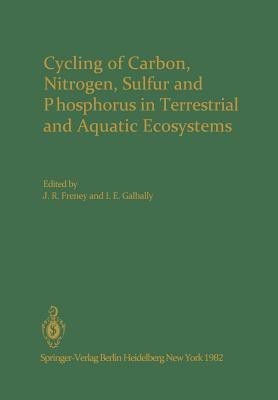Cycling of Carbon, Nitrogen, Sulfur and Phosphorus in Terrestrial and Aquatic Ecosystems(English, Paperback, unknown)
Quick Overview
Product Price Comparison
Increasing stress is being placed on the environment by man's activities including those of changing land usage for increased food production and the release of carbon dioxide due to fossil fuel combustion. Further stresses may occur if agricultural practice is modified by using plant products for liquid fuels. Rational management of these activities can only occur if there is a thorough under- standing of the biogeochemical cycles of the major plant nutrients, carbon, nitrogen, sulfur and phosphorus. A vital part of this understanding concerns the interactions between these cycles, where in various limiting processes the cycle of one element exerts a controlling influence over the cycle of one or more of the other elements. A well known example of this interaction is the role of sulfur, nitrogen and phosphorus as limiting factors in plant growth i.e. carbon uptake by the biosphere. A related effect is the suggested increase in nitrogen fixation by legumes due to CO2 enrichment in the atmosphere. Other interactions occur during the mineralisation of nitrogen, sulfur and phosphorus associated with the release of organic carbon during the decay of plant material and between the carbon substrate and mineral forms of nitrogen and sulfur during denitrification and bacterial sulfate reduction. Increased sulfur dioxide and nitrogen oxide emissions to the atmosphere in some areas are causing acid rain which appears to be affecting the productivity of some land and aquatic ecosystems.


